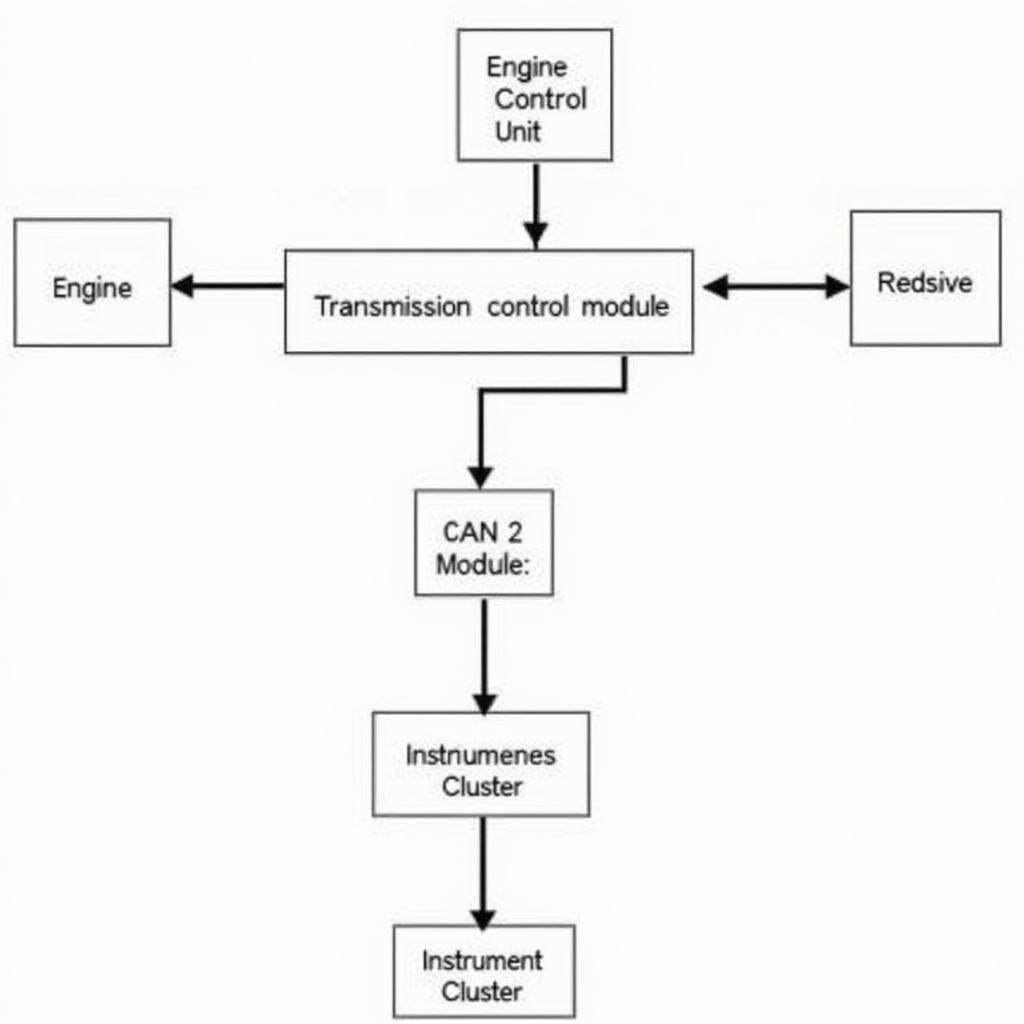The OBD2 code TID 0C can be a source of confusion for many car owners. This code doesn’t directly indicate a specific problem but instead points to a particular type of communication within your car’s network. This article will delve into what TID 0C means, why it appears, and what steps you can take when encountering it.
What Does OBD2 Code TID 0C Mean?
OBD2, or On-Board Diagnostics, is a system that monitors your vehicle’s engine and emissions control systems. When a problem arises, the system stores a code that can be accessed through an OBD2 scanner.
Unlike most OBD2 codes that are standardized across manufacturers, TID 0C is a manufacturer-specific code. TID stands for Test ID, and 0C is the specific identifier for this test. This code indicates a communication issue within your vehicle’s network, specifically related to the Controller Area Network (CAN) bus.
 CAN Bus Network
CAN Bus Network
Why Does TID 0C Appear?
The appearance of TID 0C often suggests a problem with data transmission between different modules in your car’s network. Some common causes include:
- Wiring Issues: Damaged, corroded, or loose wiring within the CAN bus system can disrupt communication.
- Faulty Modules: A malfunctioning module connected to the CAN bus, like the engine control unit or transmission control module, can cause communication errors.
- Software Glitches: Occasional software errors within a module can also lead to the TID 0C code.
How to Troubleshoot OBD2 Code TID 0C
When faced with the TID 0C code, it’s crucial to approach the issue systematically. Here are some steps to consider:
-
Identify the Specific Manufacturer: As TID 0C is manufacturer-specific, determine the make and model of your vehicle. This information is essential for interpreting the code correctly.
-
Consult Manufacturer Resources: Refer to your vehicle’s service manual or contact your dealer to understand the specific meaning of TID 0C for your car model.
-
Scan for Additional Codes: Use an OBD2 scanner to check for any accompanying codes, which can provide further insights into the problem.
-
Inspect CAN Bus Wiring: Visually examine the CAN bus wiring harness for any signs of damage, loose connections, or corrosion. Pay close attention to areas near the affected module.
-
Test Affected Modules: If wiring issues are ruled out, specialized diagnostic equipment may be required to test the functionality of modules suspected to be faulty.
What to Do Next
Troubleshooting OBD2 codes like TID 0C can be complex. If you’re uncomfortable dealing with the technical aspects, it’s best to consult a qualified mechanic specializing in vehicle diagnostics.
Remember, understanding the source of the problem is crucial. Addressing the root cause, whether it’s a wiring issue or a faulty module, will effectively resolve the TID 0C code and ensure your vehicle’s smooth operation.
Need further assistance with OBD2 codes or car diagnostics? Contact our expert team via WhatsApp at +1(641)206-8880 or email us at [email protected]. We offer 24/7 support to help you get back on the road!

